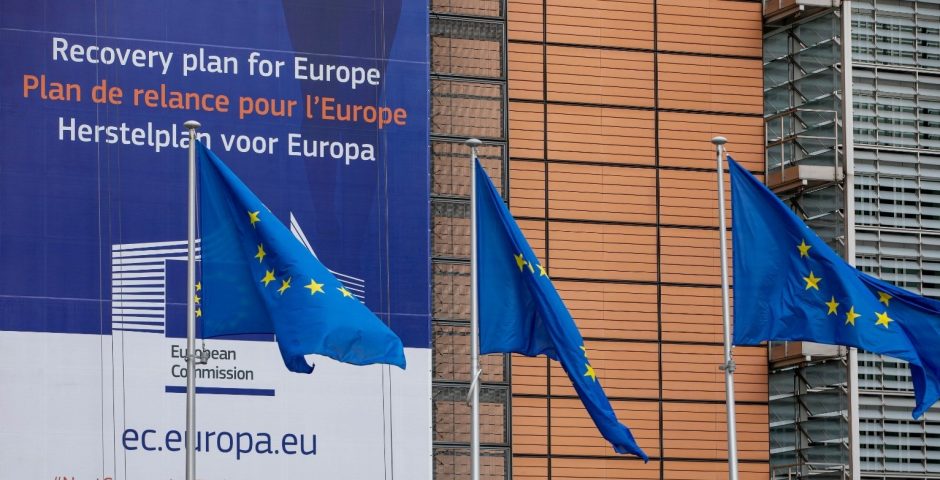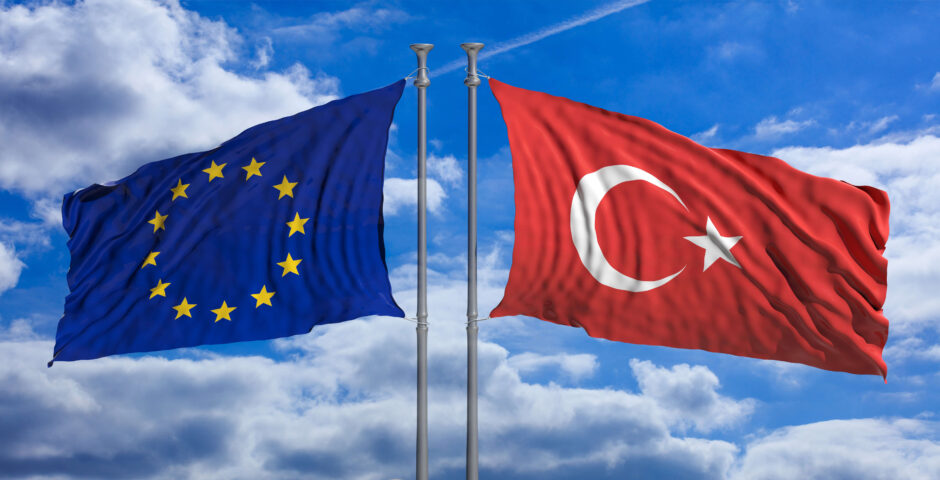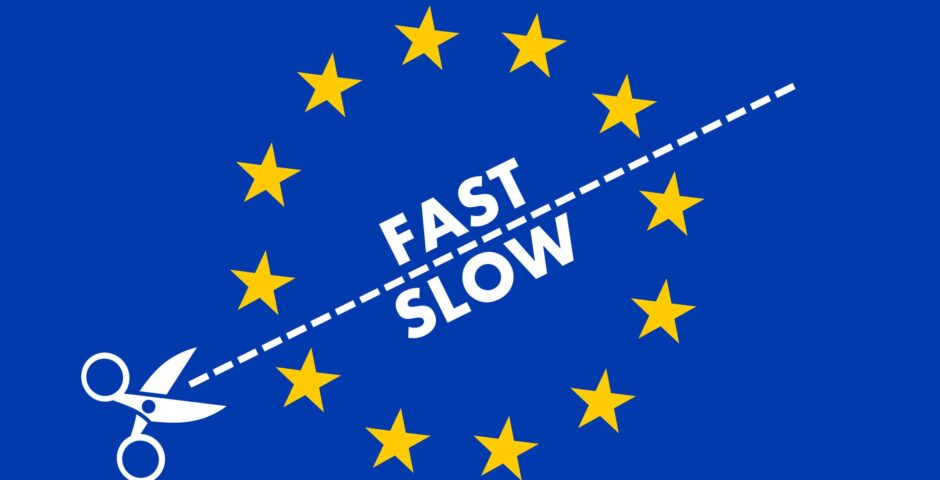Recovering from COVID-19: A tale of hidden integration?

How a global pandemic has fueled European fiscal integration efforts.
The year 2020 started with an optimism that now feels strangely distant: a new European Commission led by Ursula von der Leyen, teeming with impatience and ambition; Commissioner Timmermans’ Green Deal, and a new energetic European Council President Charles Michel looking to move the European project forward. The Union was destined to become green, sustainable, socially equal and more prosperous. All this suddenly changed with the emergence of COVID-19 in February, leading to panicked responses across the EU as the initial lockdowns led to uncoordinated national responses. Suddenly Europeans found themselves back in a situation most of them barely had memories of; locked into their own countries, with limited to no possibility to visit friends and family, suddenly facing borders they had almost forgotten about. How was Europe ever going to get back to normal?
The long way back
It took a while before heads of state found each other again, but when they did, the work on how to collectively surmount the impending economic fallout began in earnest. The first step was the suspension of the previously divisive European budget and state aid rules, allowing member states to support their economies without worrying about European regulations. Most telling of increased cooperation was the decision to jointly procure coronavirus vaccines; instead of a competition for medications between member states along the lines of the 2009 swine flu epidemic, it was now the Commission that took the lead in ordering hundreds of millions of vaccines on behalf of the member states. This represented the first unprecedented step towards EU-governance of the crisis, as healthcare has previously been the exclusive domain of the national governments. While the role of the EU in healthcare is still limited by Article 168 of the Treaty on the Functioning of the European Union, it does represent a significant step towards increased cooperation on this front. This leads me to the elephant in the room: the recovery instruments.
The European recovery package: Next Generation EU (NGEU)
From the beginning of the pandemic, it quickly became clear that the virus would lead to the worst economic crisis in EU history. This led to calls by members from across the Union for a joint economic response, and after four days and nights – during which the negotiations repeatedly were on the verge of failure – the largest fiscal stimulus package ever was agreed: 1.800 billion euros. However, the size of this number hides a more important and consequential decision: for the first time in history, the European Commission will be borrowing large amounts of money (750B euro) to ease the economic disparities between member states. Collateralized European debt. This is a big deal, not only because northern European countries have for years argued against this step, but also for the fiscal implications that it entails; the EU will now become a fiscal player in its own right. This essentially means that the European Commission will become responsible for debt incurred on behalf of the bloc as a whole, and then redistribute the funds following the agreed-upon distribution mechanism. This will benefit the economies hardest hit by the pandemic.
The potential effects of the NGEU
Even before the NGEU has really kicked in, southern European economies are already seeing the benefits. The programme has started to affect bond markets, reducing the cost of borrowing in countries with weaker economies. When the corona bonds begin to be issued in earnest, they could fundamentally change the market. A large pan-European bond creates a financial instrument that matches US Treasuries. This means an attractive asset for foreign investors looking for a safe investment with a small return. The initial appeal of these bonds quickly became evident, as the EU was met with huge demand. Investors placed bids for more than 233B euro, far outstripping the 17B euro in bonds available. This means that the Union can issue common debt at scale, also creating a model for doing so successfully the next time a crisis strikes.
However, this experiment will only be successful and repeatable if it has concrete results to show, something which will depend mostly on the member states, This is because the money from the recovery package is not just given to the states; finance ministries have to present recovery plans with concrete reform and investment proposals to the Commission, following precise criteria. For example, the plans must devote at least 37% to climate-related objectives, and another 20% to digitalisation. They will also need to include parts of the Commission’s “country-specific recommendations”, which are structural-reform suggestions that various governments have failed to implement for years.
National plans
National governments will have to present their plans by the end of this month, after which the Commission and Council will review the proposals. This is where some concerns arise, as some governments look unlikely to present workable plans in time. This has led Christine Lagarde, president of the European Central Bank (ECB), to express fears of a slow roll-out. Her concern is understandable, as the success of the recovery package rests in large part on governments’ ability to invest quickly and wisely, making sure the funds are used effectively to stimulate growth, digitalisation and climate adaptation.
Whether all national governments will succeed in convincing the European Commission and the Council will remain to be seen. For now, the funds from the programme should become available this summer, with a quarter of the total distributed this year. However, even with the programme, the ECB does not expect GDP levels to return to their pre-COVID levels until well into 2022. This means EU-level fiscal stimulus will likely need to expand, and while this broad public investment channel has never been tried at the EU, the inability of the hardest-hit countries to sustainably finance their own fiscal stimulus likely means the programme will remain necessary.
The future of corona bonds
The current plan is to start repayment in 2028, with a gradual reduction of debt over the next three decades. In June, the Commission will propose common taxes (a first), which is likely to include a tax on polluting imports and a digital tax. To get these plans accepted, the Commission would need unanimous support, which has proven to be a challenge in the past. Alternatively, the NGEU could be refinanced with new debt, which will attract opposition from countries like Germany, the Netherlands, Austria, Sweden and Denmark, who agreed to the NGEU on the basis that it would be a one-off initiative. These countries are strongly opposed to a transfer union, which would see them bearing partial financial responsibility for economies they see as underperforming (read. Southern Europe).
For now, the plan seems to have gathered pace. Countries currently struggling for economic growth see in the NGEU an opportunity to digitalise their economies and improve their climate readiness, while the stronger members hope that this plan will finally allow the laggards to catch up economically. If the NGEU succeeds it might prove a watershed moment in the history of European integration. It could be the moment when, despite high tensions and unprecedented challenges, collective action allowed the countries of Europe to emerge from the crisis stronger and more prepared for the world of tomorrow.
Marnix Vermeer obtained a Master in Economics: Global challenges and macroeconomic policy from Maastricht University, and is currently pursuing a Master in International Relations in Barcelona.
Image: Shutterstock




